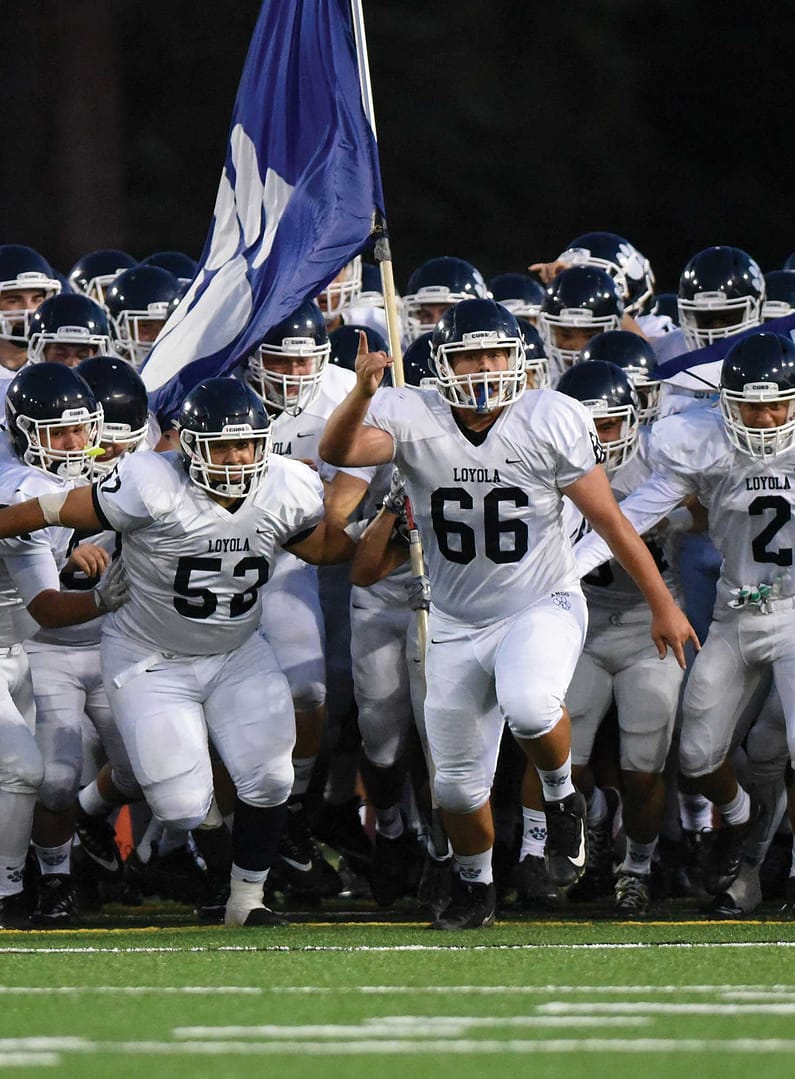Over the summer, Loyola welcomed a new addition to its campus. The 320-square-foot temporary addition that sits just north of Burr Hall was leased in order to accommodate the needs of a growing robotics program. Established in 2009, the robotics team has competed in numerous tournaments hosted by FIRST Robotics Competition and has expanded rapidly, hence the need for the new space. Now led by mathematics teacher Andrew Mazur, the robotics program looks to continue expanding and attracting interest from all who might be interested.
FRC 3408, the official name of the team, is comprised of around 30 students of all grade levels who share a common passion for engineering, programming, technology and robotic design. Since the club has grown exponentially in size and appeal since its conception, the Loyola Hall basement that once hosted the team was quickly outgrown, and a solution was needed. Principal Frank Kozakowski, Assistant Principal for Student Life Paul Jordan ’88 and Senior Director of Facilities Management Michael McDermott took notice to the increasing needs of the club and brainstormed for the incorporation of a new workspace.
“There were spaces that [Jordan, Kozakowski and I] were looking at for the future to give them for a more permanent location, but in the meantime, we wanted to get them a space that they could use and build in with ease,” said McDermott.
“[The new space] is a cost effective and temporary solution while a more permanent space is on hold for the time being. In years past, the team had to lug all their equipment down into the Loyola Hall basement and eventually grew out of that small space.”
The possibility of a permanent relocation could soon be on the horizon, said McDermott, as a spot in Berendo which is currently used as the archive room could soon open up. However, relocating the archives is no simple task, according to McDermott. Any room that houses the archives requires extremely meticulous planning and funding, hence the delay. In the meantime, the robotics program will use their new space.
“The new space will be excellent for the team because it will give us a dedicated space to carry out our tasks,” said junior programmer Steve Cox.
“From a safety standpoint a designated space is essential, as it allows for us to develop consistent procedures when machining,” said junior team member Wilder Buchanan.
“The additional space means that when the six-week build season starts, the team will have a dedicated space to carry out work,” said Cox. “This means all available time at the meetings are spent on the robot, not cleaning up and putting machinery back into a closet.”
“The space will also allow us to establish a permanent machine shop with the proper setup including things like ventilation and sturdy workbenches,” said Buchanan. “This will enable the team to improve its in-house machining capabilities and, hopefully, add new machines in the future.”
“My hope for the robotics team is that we can continue to grow students’ passions for science, technology, engineering, and math,” said Cox. “As more people see the fun and excitement of robotics, we hope to bring more passionate and interested students onto the team to help us grow and do the best we can.”






Comments are closed.